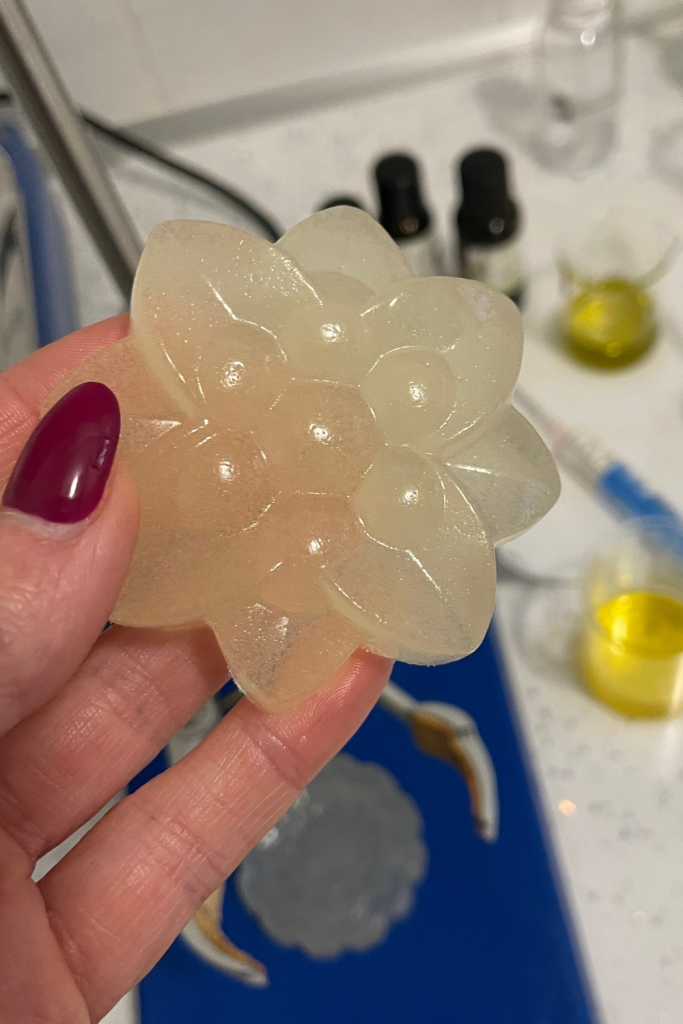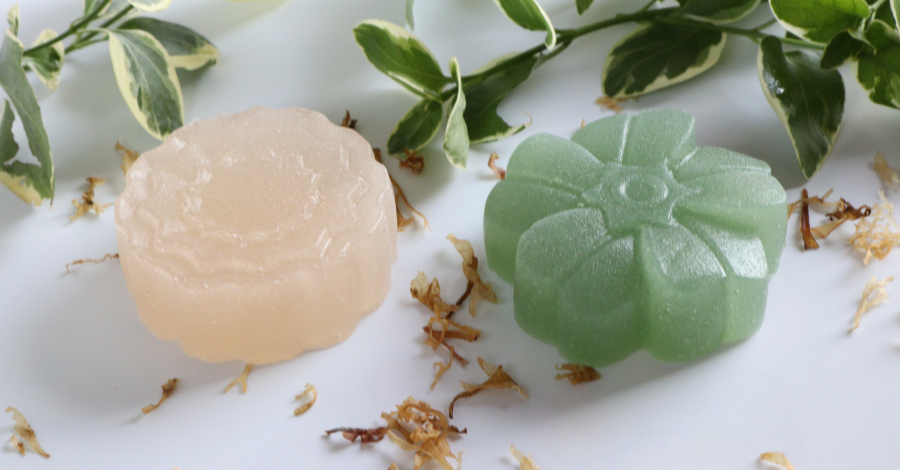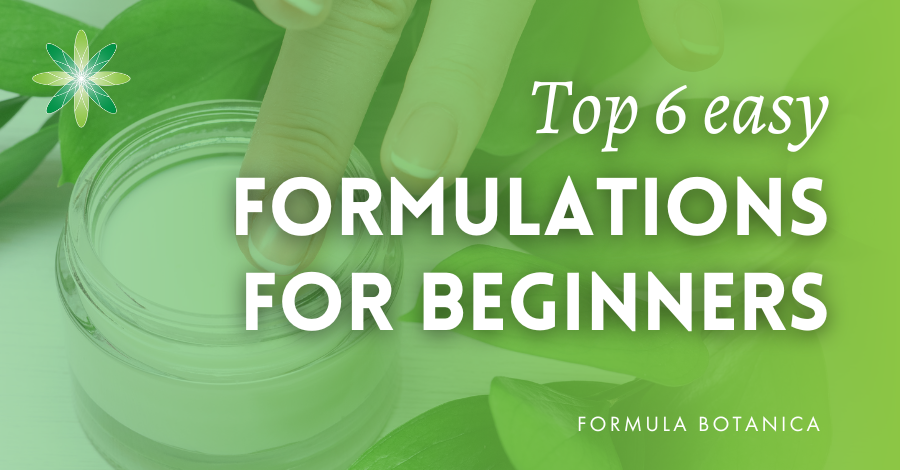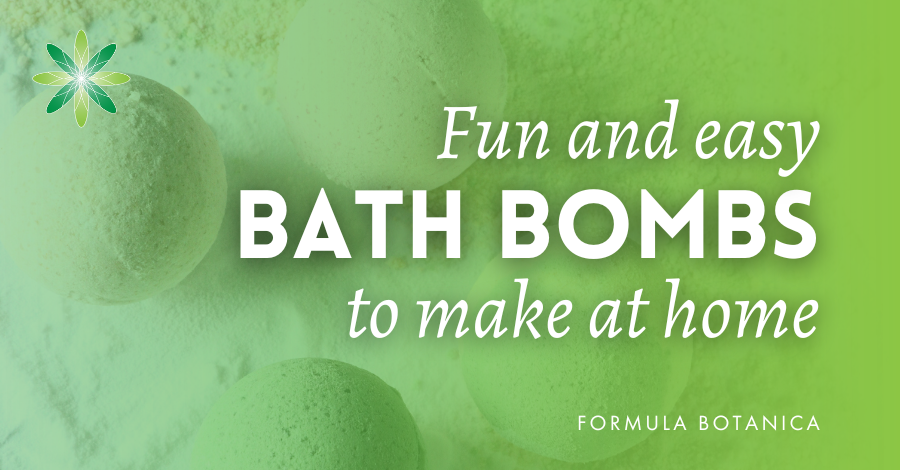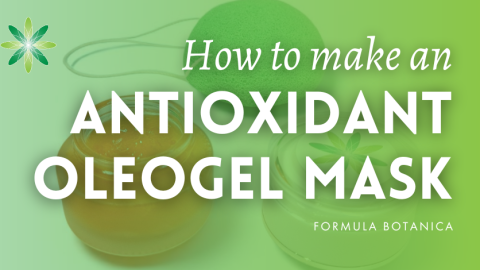[Updated: 23.01.24]
Have you ever wondered what those jiggly shower jellies are that are on trend right now? If you’re looking to elevate your shower routine then these wobbly creations might just be the game-changer your skincare regimen has been waiting for.
Shower jellies offer a unique shower experience that goes beyond the ordinary. Their playful texture adds an element of fun to your daily cleansing routine, turning your shower time into a sensory adventure. But, it’s not just about the entertainment – these jellies are designed to cleanse and nourish your skin, leaving you feeling refreshed and revitalised.
We’ll show you how to make these colourful natural shower jellies using natural ingredients that are gentle on the skin.
The key element in the each formula is gum, so let’s take a deeper look at the role gums play in making our shower jellies.
Know your cosmetic gums
A correctly-selected gum, or better said a synergistic blend of gums, will create the stable, self-supportive jelly texture we’re looking for in our shower jelly formulation.
As we are formulating natural shower jellies, we aren’t using synthetic polymers so we are opting for carrageenan, which is a natural gum sustainably sourced from red seaweed.
Carrageenans are a big family of natural gelling, thickening, and stabilising polymers that can provide a variety of different textures, from the thinnest to the thickest, self-supporting gels that can hold various shapes or designs.
The most popular and commercially valuable among the carrageenan types are carrageenan kappa, carrageenan lambda and carrageenan iota. All three types have different requirements for proper gelling and provide different types of gel.
In our formula, we are using carrageenan kappa which is a self-supportive and robust gel, but one that is however prone to syneresis; this means that the gel loses its stability and strength over time and also loses its water content. To avoid this, we recommend adding a complementary gum / natural polymer to the formula that will support the carrageenan’s stability.
Glucomannans (konjac gum), and galactomannans (tara gum, locust bean gum) are first-choice natural polymers suitable for use in a blend with carrageenans, but xanthan gum and guar gum will work well too if correctly added.
Shower jelly foaming and cleansing
Surfactants or foaming agents are another important component of this fun formulation project. We are looking to achieve nice, mild cleansing properties along with a stable foam for the optimal bathing experience with our shower jellies.
There is a lot of choice now in high-quality surfactants derived from natural sources, that we can use in this formulation. Our preference is for liquid ones, but pellets or paste forms of surfactant are suitable too, but need to be melted first. In our formulation, we are going to use widely available surfactants that are easy to use: sodium lauroyl sarcosinate, and cocamidopropyl betaine.
Do we need a preservative?
Although this formulation may look “solid” – as there is no freely-circulating water in it (as all the water content is bound within the polymeric structure) – we still need to add a preservative to boost its safety and stability.
Choosing the right natural preservative system can be challenging since the method used to create the wobbly texture of the shower jellies is a hot process requiring us to heat the whole blend to 75°-80°C. That means we need to add a preservative that is effective in such temperatures.
A blend of potassium sorbate and sodium benzoate works well for this purpose, but we need to keep in mind that this preservative blend is pH sensitive, and the pH of the formulated shower jelly should not exceed pH 5 (which may further affect the stability of the gel). Fortunately, some carrageenans are treated to withstand lower pH ranges, but do check this with your particular supplier.
The role of glycerine in the shower jelly
Glycerine has a two-fold role in our shower jelly formulation. First, it serves to disperse the higher load of gums, which would otherwise end up in a big clump. Making a slurry of the gums with glycerine is an essential process for this formulation. Its other role is to add hydrating benefits and support the stability and richness of the foam when the jelly is in use.
Additives: Aroma, colourants, and peeling particles
The scent of a cosmetic product (or its lack of scent) are among the most important aspects of any cosmetic product’s characteristics, along of course with its function and aesthetics. Essential oils can be easily added to the formulation, as well as colouring agents such as plant extracts, iron oxides or ethically-sourced micas. Peeling particles can bring a deeper cleansing effect, increase foam, and add texture to the product. Crushed plant seeds, kernels or an inorganic material such as pumice stone or volcanic sand can all be added to your jelly formulation to a maximum of 1%.
Shower jelly moulds and shapes
As we mentioned previously, this is a hot-pour process in which all the water phase ingredients are heated to 80-85°C to achieve full hydration of the gums and good stability of the final product. Various moulds can be used to create appealing, fun shapes. Silicone ones are the most versatile and the easiest to maintain, and always produce satisfying results.
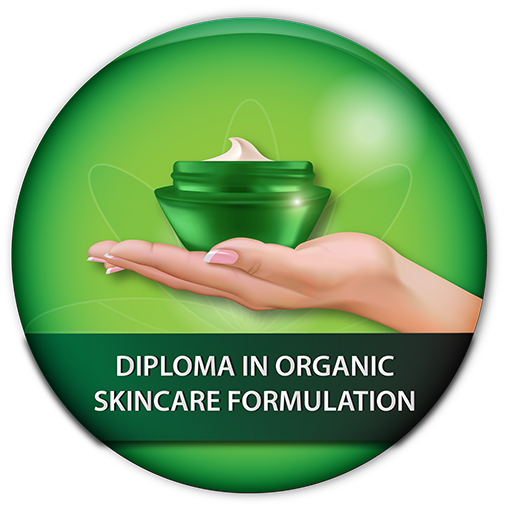
Do you want to learn how to make organic skincare that works?
Our award-winning foundational natural skincare course teaches you how to formulate organic skincare products and launch the beauty brand of your dreams. Click Here
How to use a shower jelly
Shower jellies can be formulated as a single-use product, as well as multi-use products that are kept on a separate soap dish after use. Unused jellies should be properly stored in closed containers to prevent them from drying out.
Our formulation: natural shower jellies
We used three different plant-based colourant ingredients to make our red, purple and green shower jellies (the white translucent one has no colourant added). You can have fun exploring your own choices of colourants and other additives too. See our formulation tips below about adding colourants.
Makes: recommended trial batch size: approx. 100g (2 shower jellies of 50g).
Formulation: a hot-process formulation.
Time taken: 10 minutes.
Level: beginner to intermediate-level formulation to personalise and adapt.
| Phase | Ingredients | INCI | Weight (g) |
| A | Aqua | Aqua | 64.40 |
| A | Dermosoft pA-3 | Sodium phytate, Aqua, Alcohol | 0.10 |
| A | Euxyl K712 | Potassium sorbate, sodium benzoate | 1.00 |
| A | Sodium lauroyl sarcosinate | Sodium lauroyl sarcosinate | 15.00 |
| A | Cocamidopropyl betaine | Cocamidopropyl betaine | 5.00 |
| B | Glycerine | Glycerin | 10.00 |
| B | Carrageenan | Carrageenan | 2.00 |
| B | Solagum AX | Acacia senegal gum, xanthan gum | 1.50 |
| C | Lemon essential oil | Citrus limonum fruit oil | 1.00 |
| Total: 100.00 |
Equipment:
- Scales
- Stainless steel bowls
- Hot plate
- Water bath
- Silicone spatulas, stainless steel spoons
- Watch glass
- Protective gloves
- Silicone mould
Method of Manufacture
- Preparation
Sanitise your utensils and work area, and wear appropriate PPE according to GMP.
- Phase A: surfactants, preservative and chelator
Measure and mix all the ingredients for phase A.
- Gum slurry
Make a slurry of phase B ingredients, and add to A.
- Check and adjust pH
Adjust pH to suit the optimal preservative pH range. In our case, it is pH 5.
- Heat and blend with Phase B – gum slurry
Heat A+B ingredients on a hot plate up to 75-80°C, and mix continuously to prevent overheating the ingredients.
- Cooling down
Once heated and all the gums are fully hydrated, let the blend cool down slightly.
- Essential oil
Add essential oil below 60°C, mix in well.
- Pour into moulds
Pour into silicone moulds and let the jellies harden overnight.
- Label and date.
Label and date your batch.
Formulation tips
- If you wish to experiment with colourants like we did to make red, purple and green jellies, you can try using plant extracts such as hibiscus flower powder, kakadu plum powder, butterfly pea flower powder, chlorophyll, or turmeric. Try different processes to implement the colour – you can directly add extract into the water as a solution, or dissolve them as an infusion (“tea”). Keep in mind that most plant extracts, although of vibrant colour at the beginning (when fresh), will fade over time or change their color with changing pH. For ideas about plant-based colourants, see our post: 38 natural colourants for organic skincare.If you want to add more stable colorants, try iron oxides or responsibly-sourced micas, these can be added at the end of the formulation step, prior pouring the blend into moulds. The amount of such material should be quite small, usually below 0.5% of the total formulation.
- An important point is to add gums into the cold water phase and disperse it properly before heating.
- Surfactants can be added as per your selection, but do not forget to adjust pH to match with the preservative efficient window before the next step.
- Sufficient heating is important to fully hydrate carrageenan, to create a self-supportive jelly-like texture.
- By working with different eco-friendly surfactants and adjusting their ratios, you can create your desired amount of foam.
- Keep in mind that the more complicated the formulation (more electrolytes and more surfactants) the more the interaction with your gums which might result in your gums not forming a gel at all.
Experiment and have fun with shower jellies
These shower jellies do not dry out the skin as they are formulated to be pH balanced. Their lovely subtle aroma makes shower or bath time a real joy!
It’s now your turn. Do share your photos with us on social media and don’t forget to tag us @FormulaBotanica as we’d love to see your creations.
The red and purple shower jellies in this post were contributed by Teresa Foo, a former Formula Botanica tutor.
Suggested suppliers
Many of the suppliers below ship internationally. We have given their home country base.
Aromazone (EU).
Aromantic (UK)
Alexmo Cosmetics (EU)
Manske (EU)
Soap Kitchen (UK)
Elemental (EU)
Lotioncrafter (USA)
Essential Wholesale (USA)
O&3 – the Oil Family (UK/EU)
Go Native (New Zealand)
Naturally Balmy (UK)
Soap & More (Canada)
FREE TRAINING
Learn how to become an
Organic Skincare Formulator
FREE TRAINING
How to become an
Organic Skincare Entrepreneur
FREE TRAINING
How to become an
Organic Skincare Entrepreneur
Leave us a comment

Miroslava is a former grading tutor at Formula Botanica. She has a Ph.D in neuroscience, expertise in biology and chemistry, and a lifelong passion for natural cosmetic formulation.





